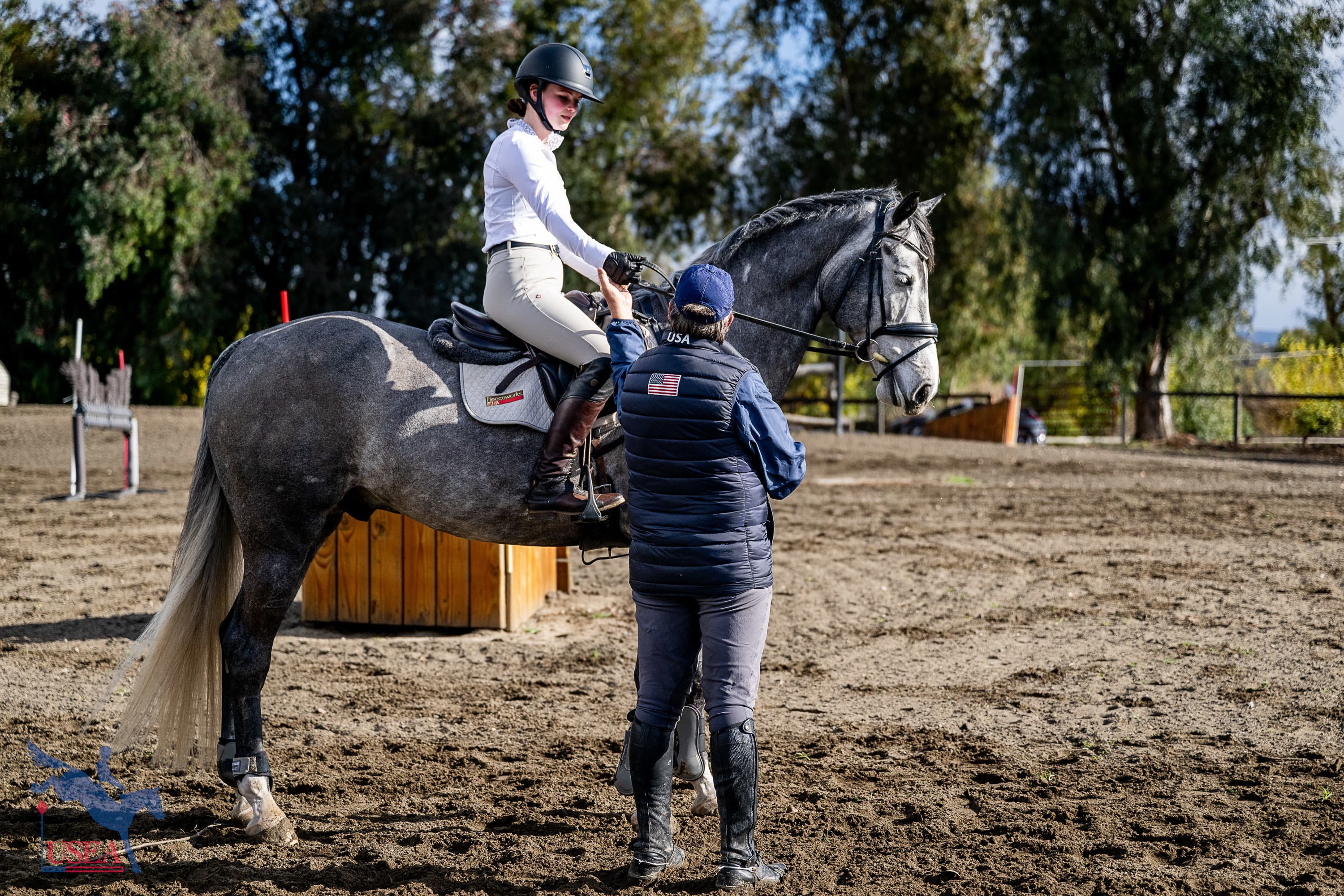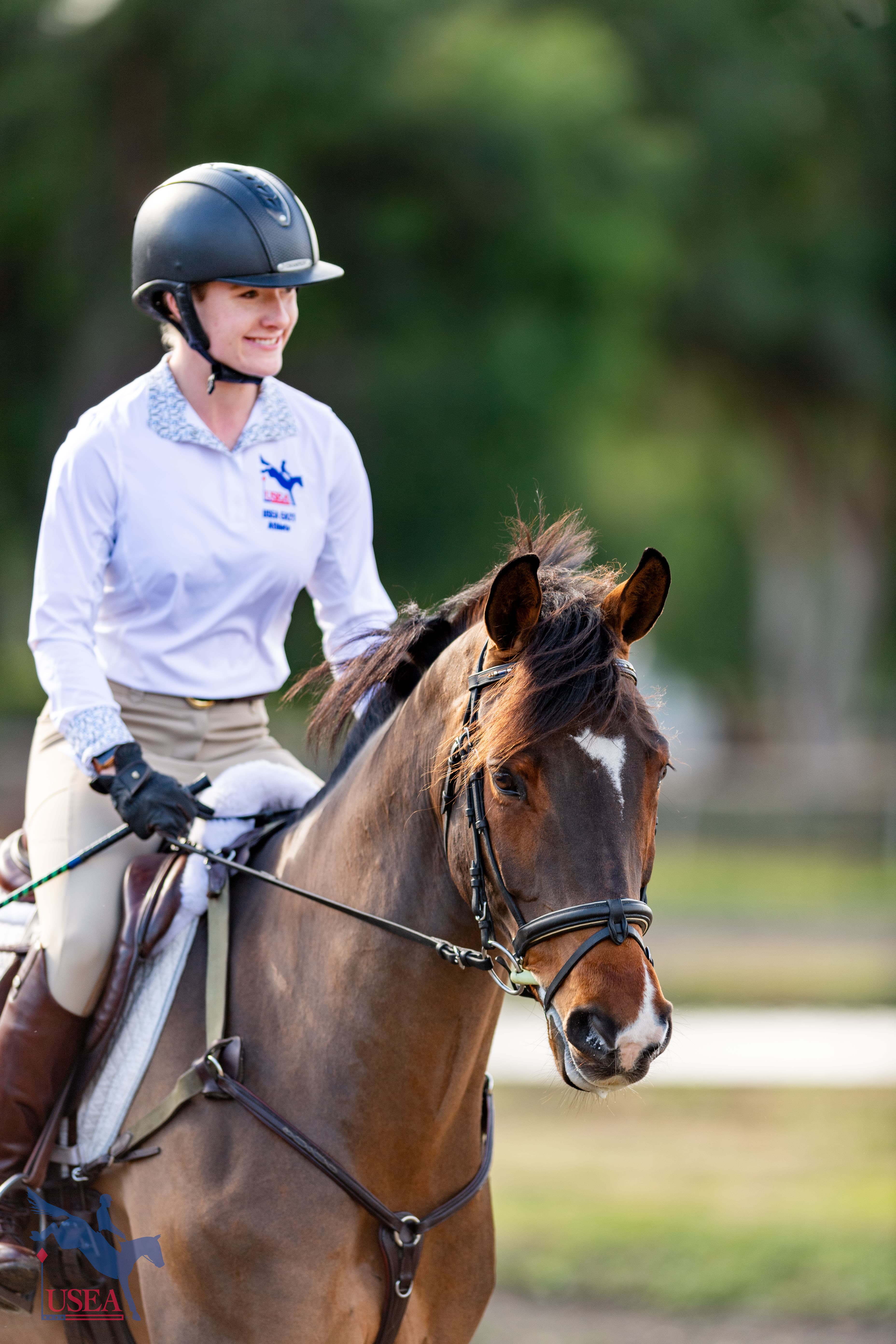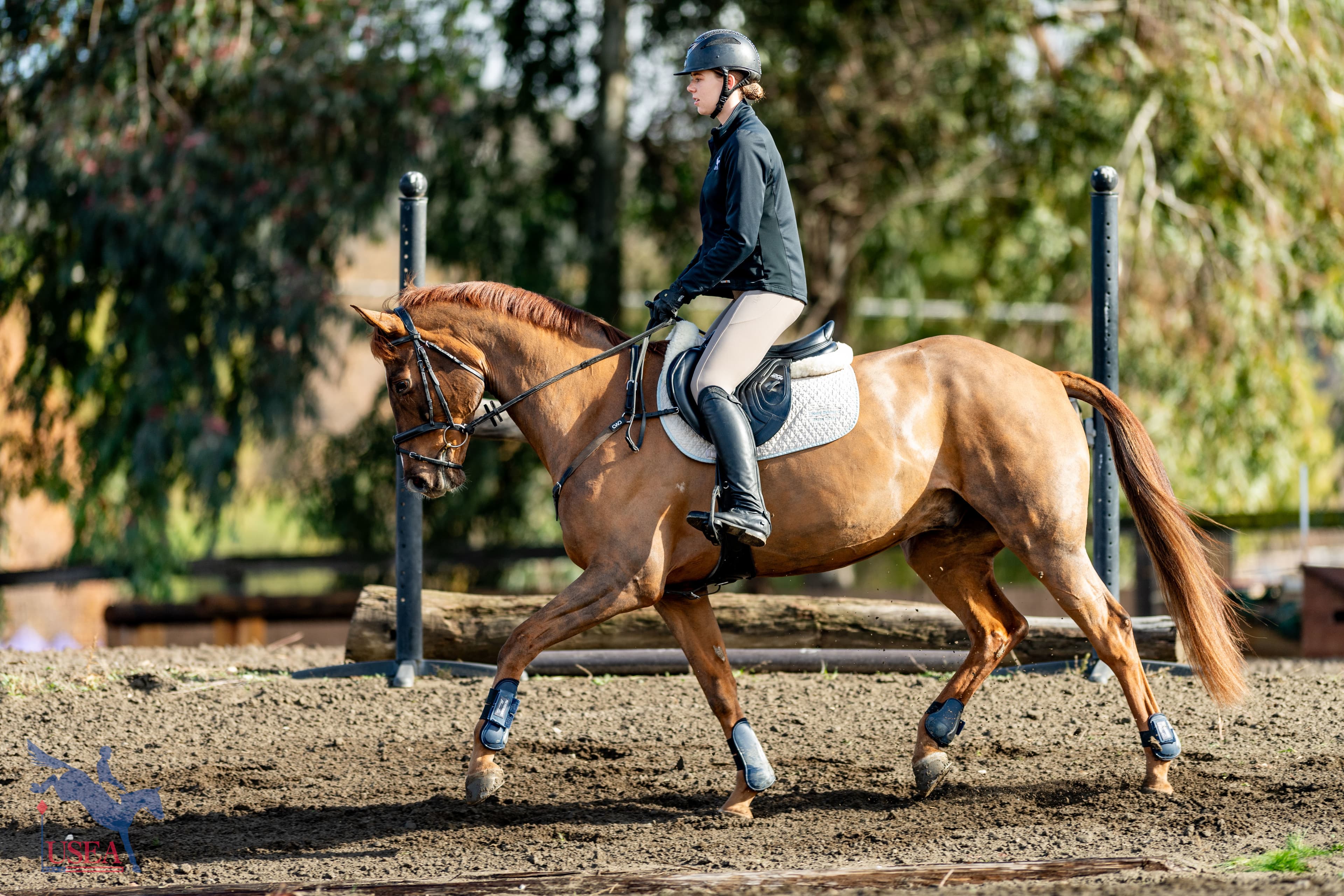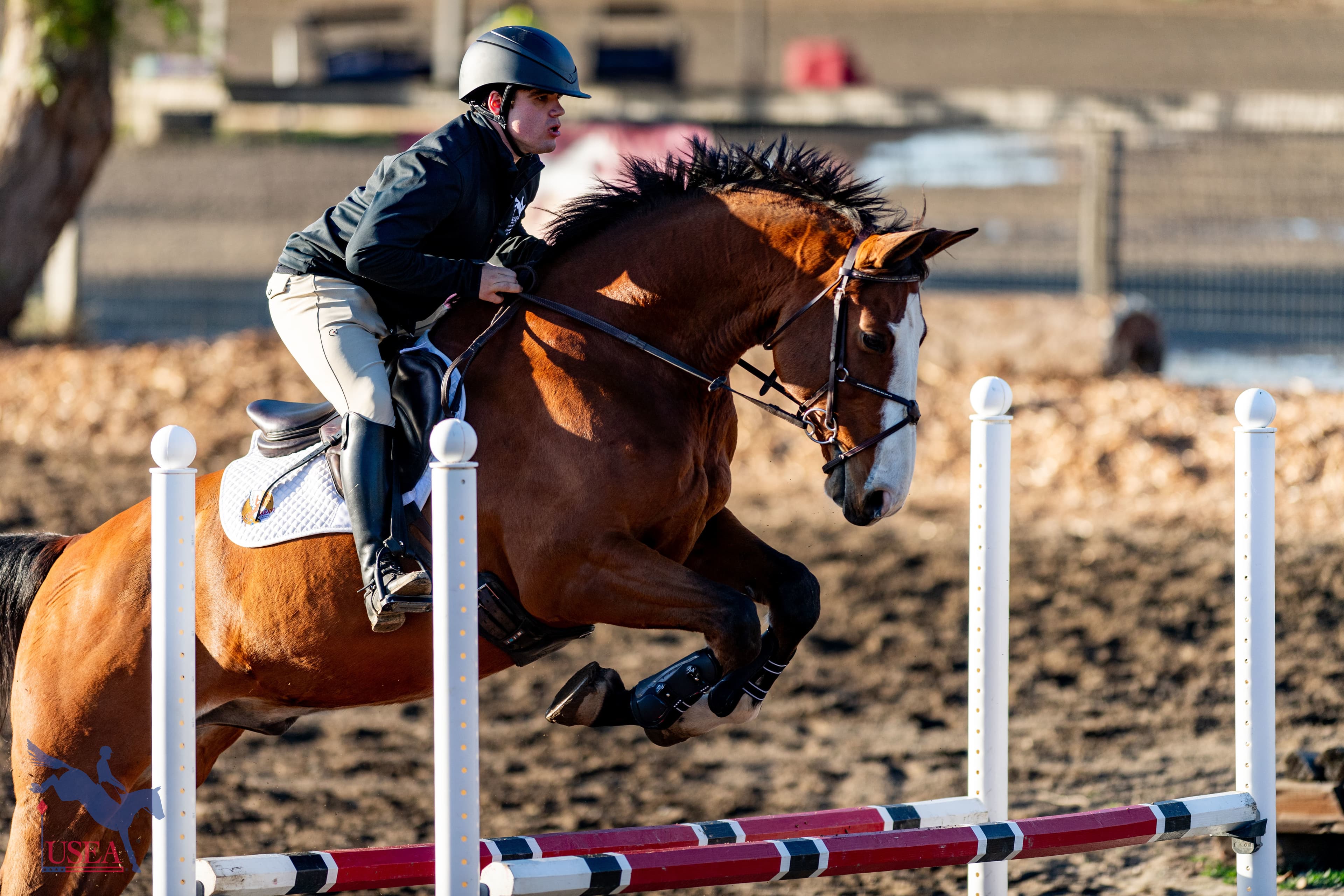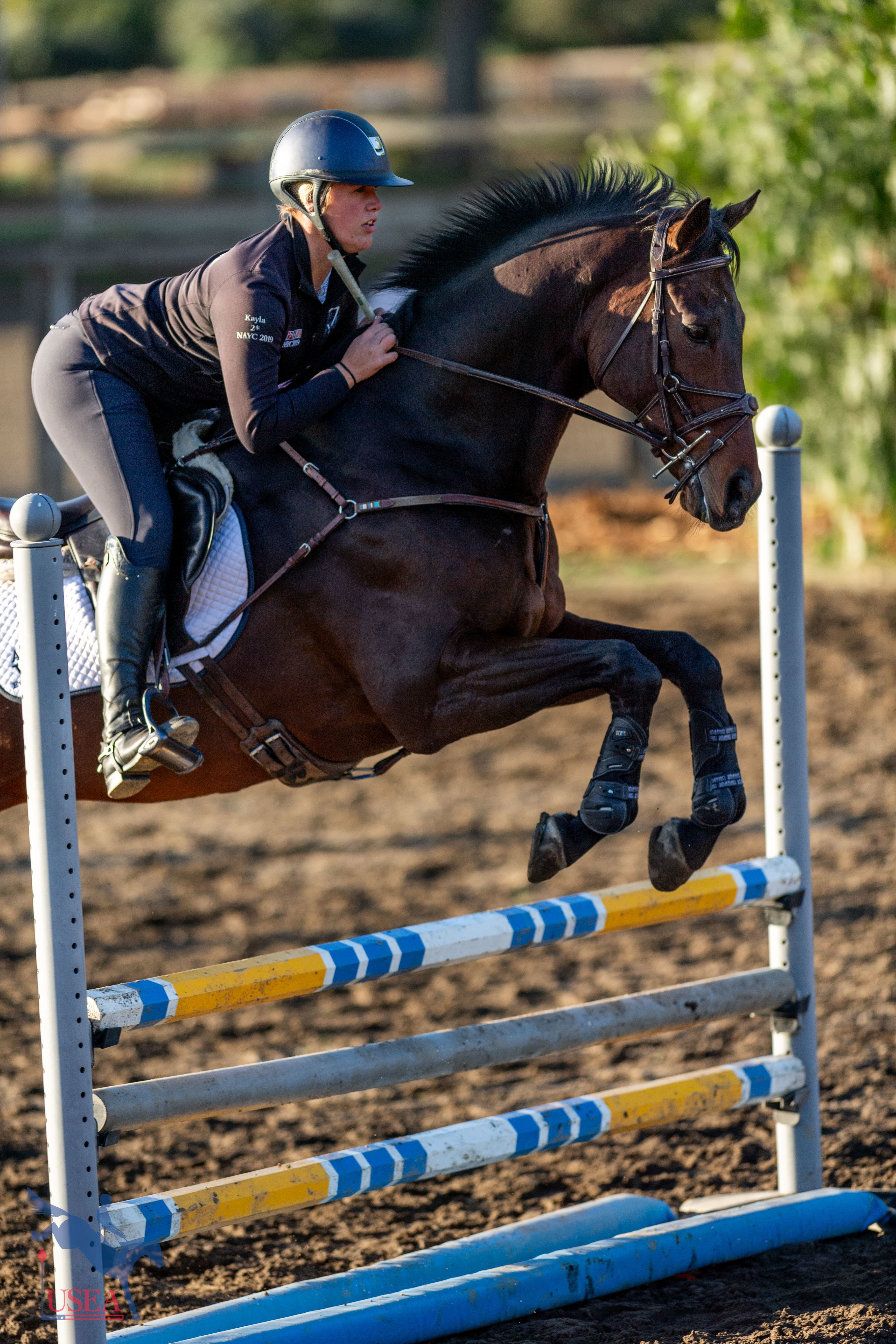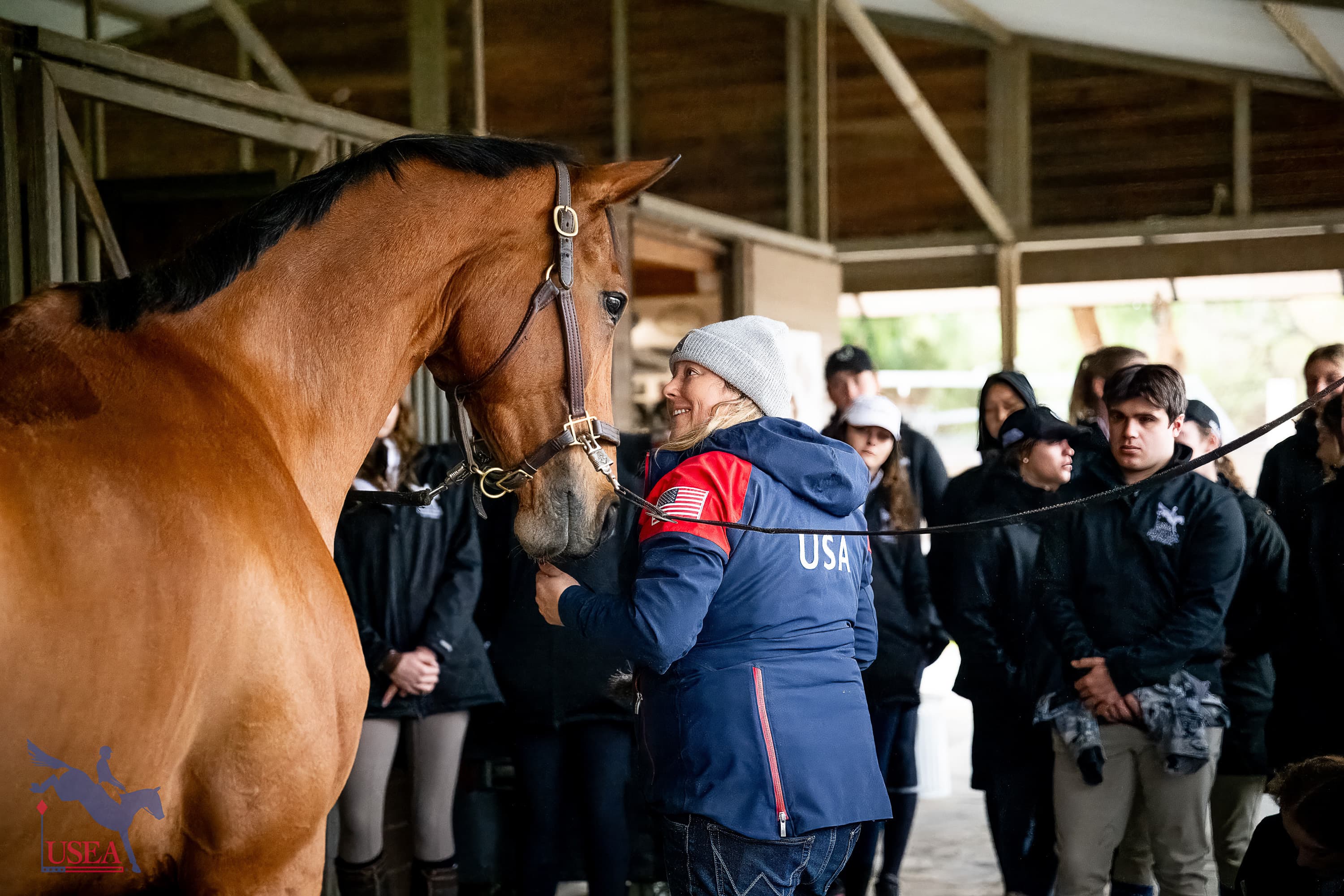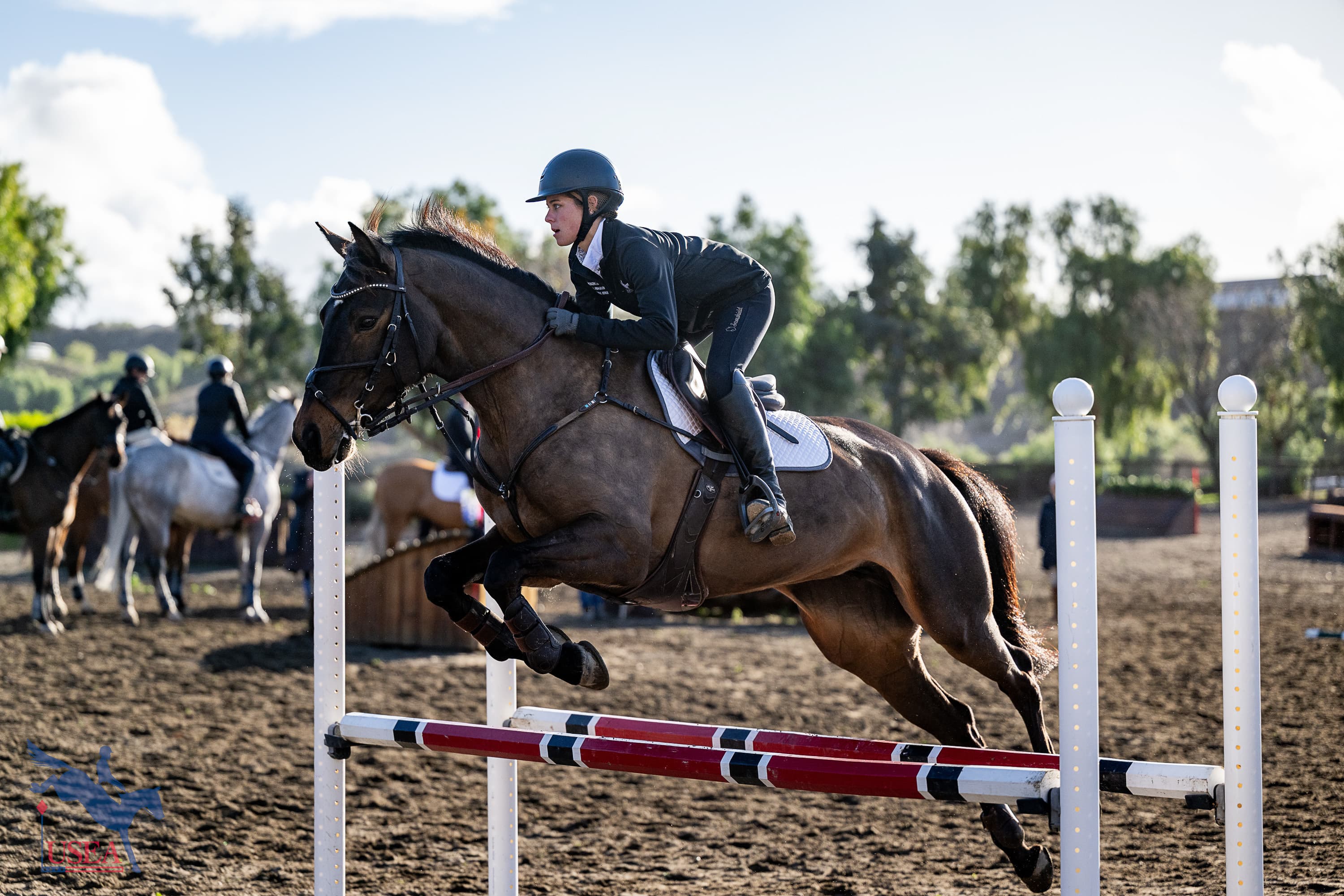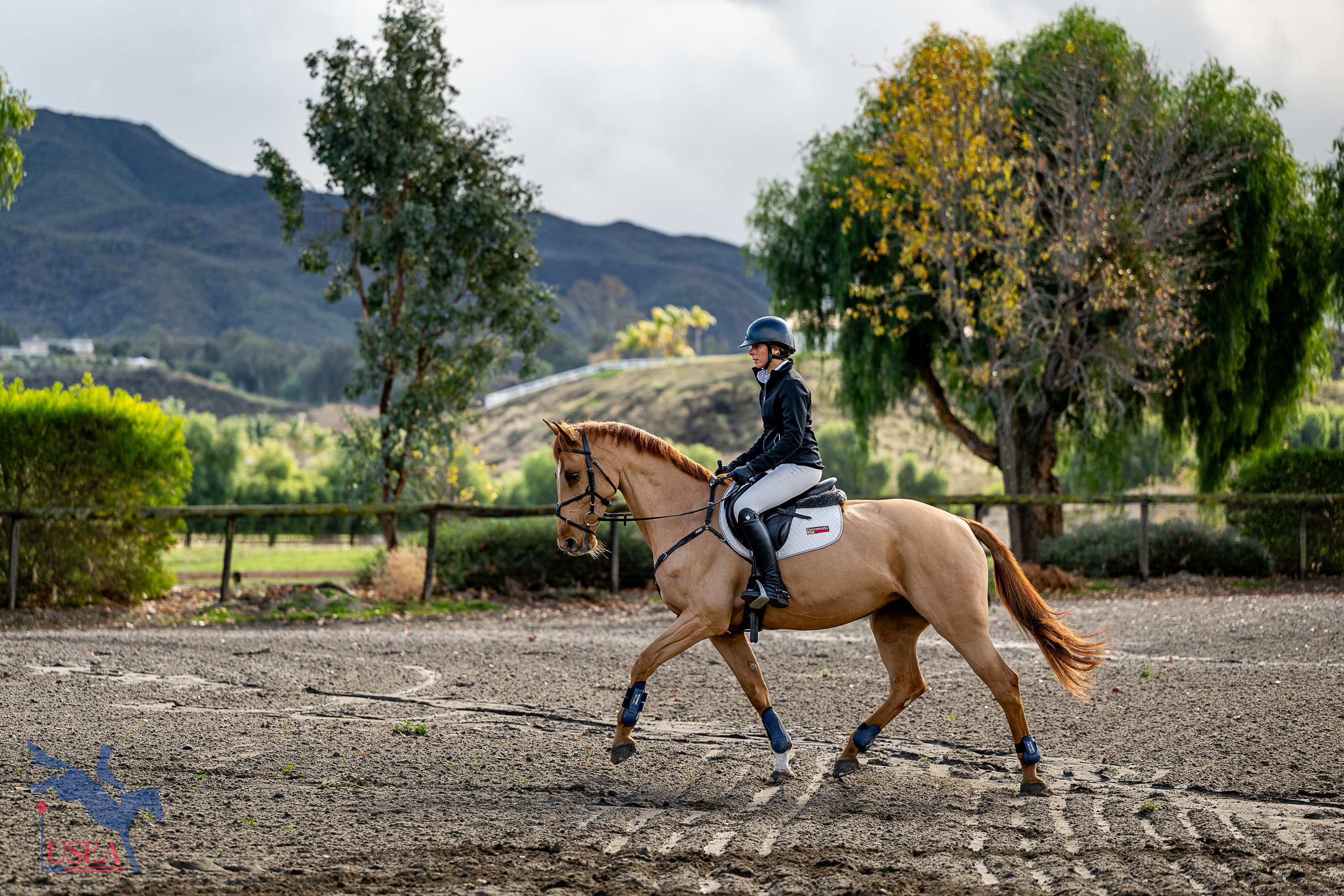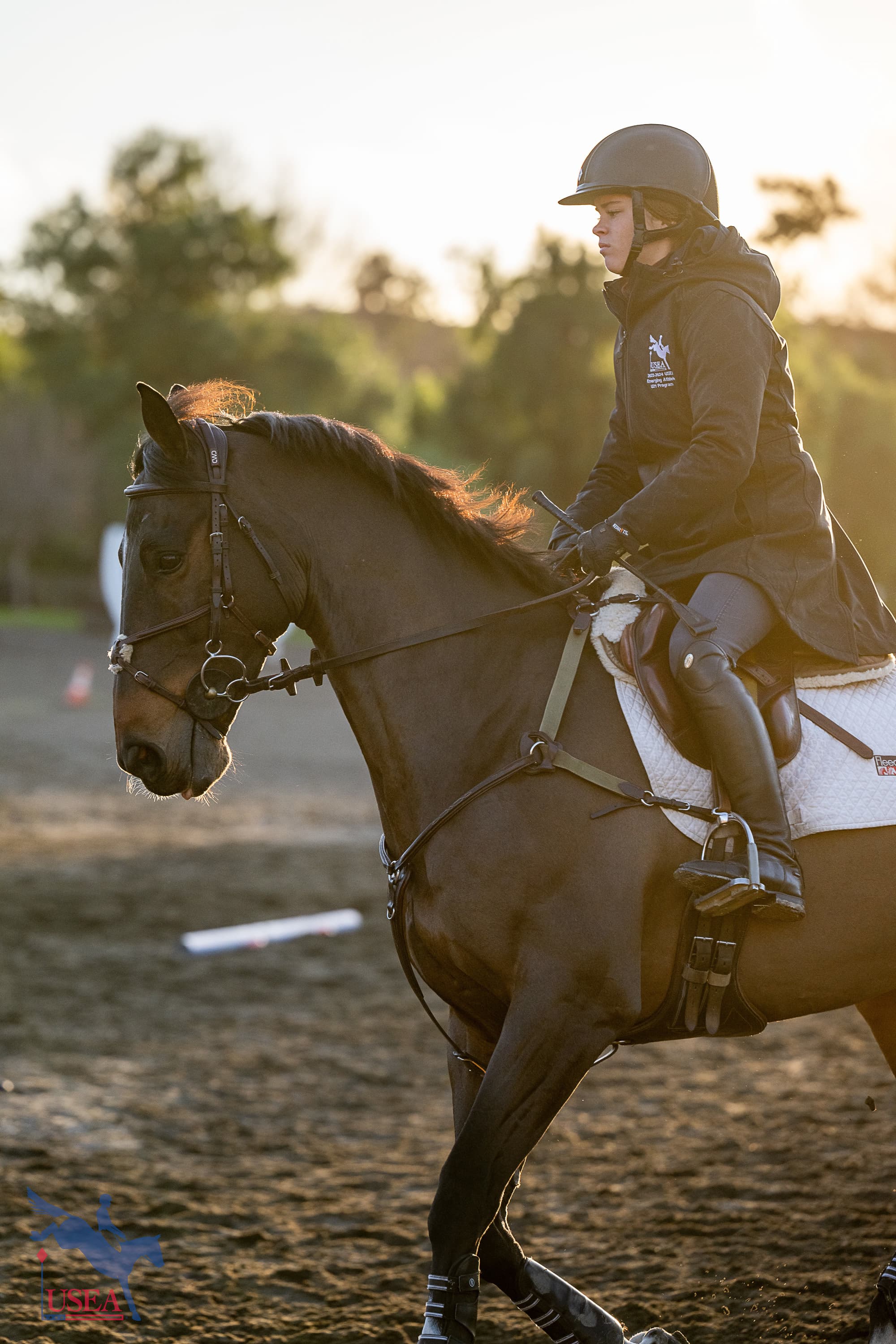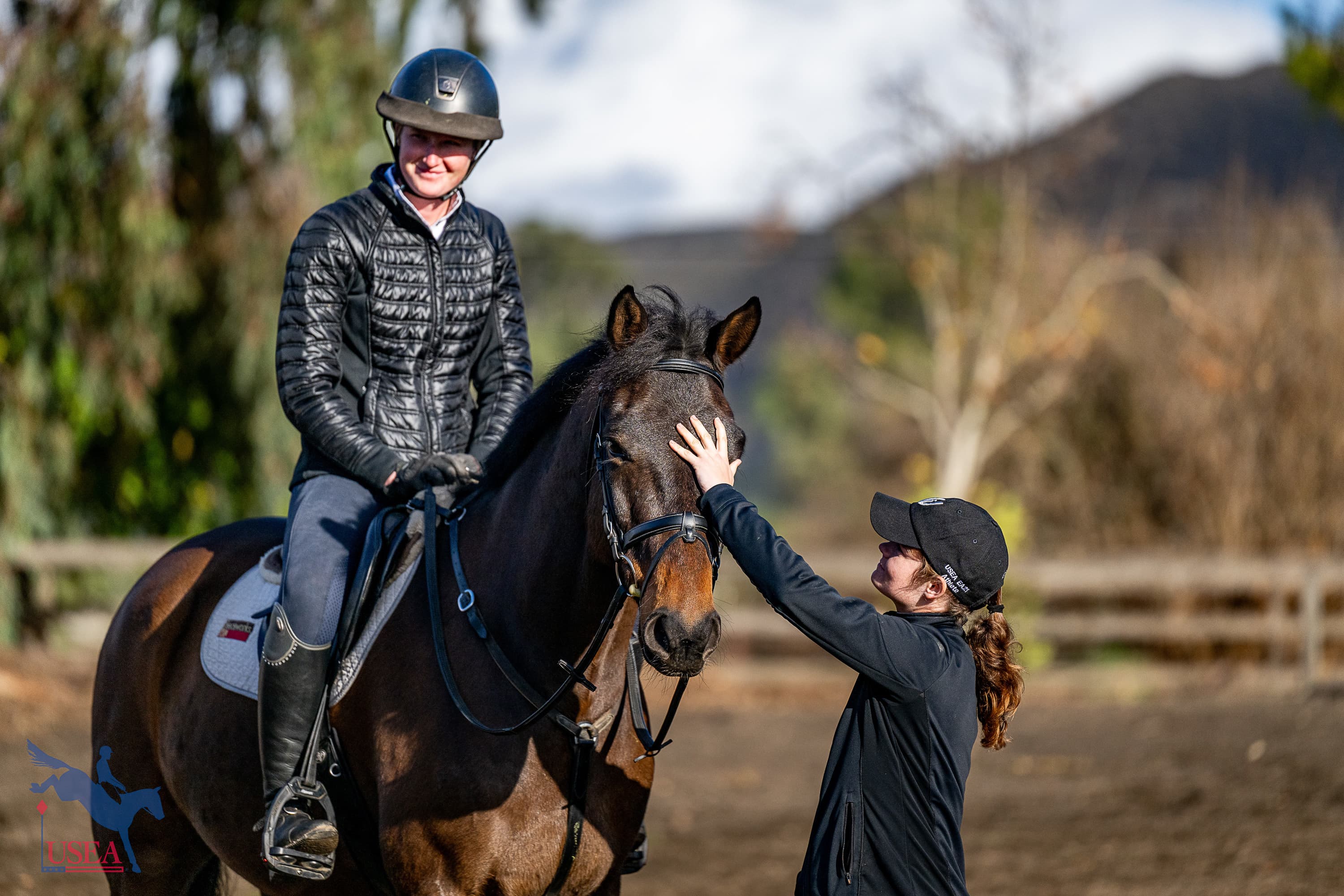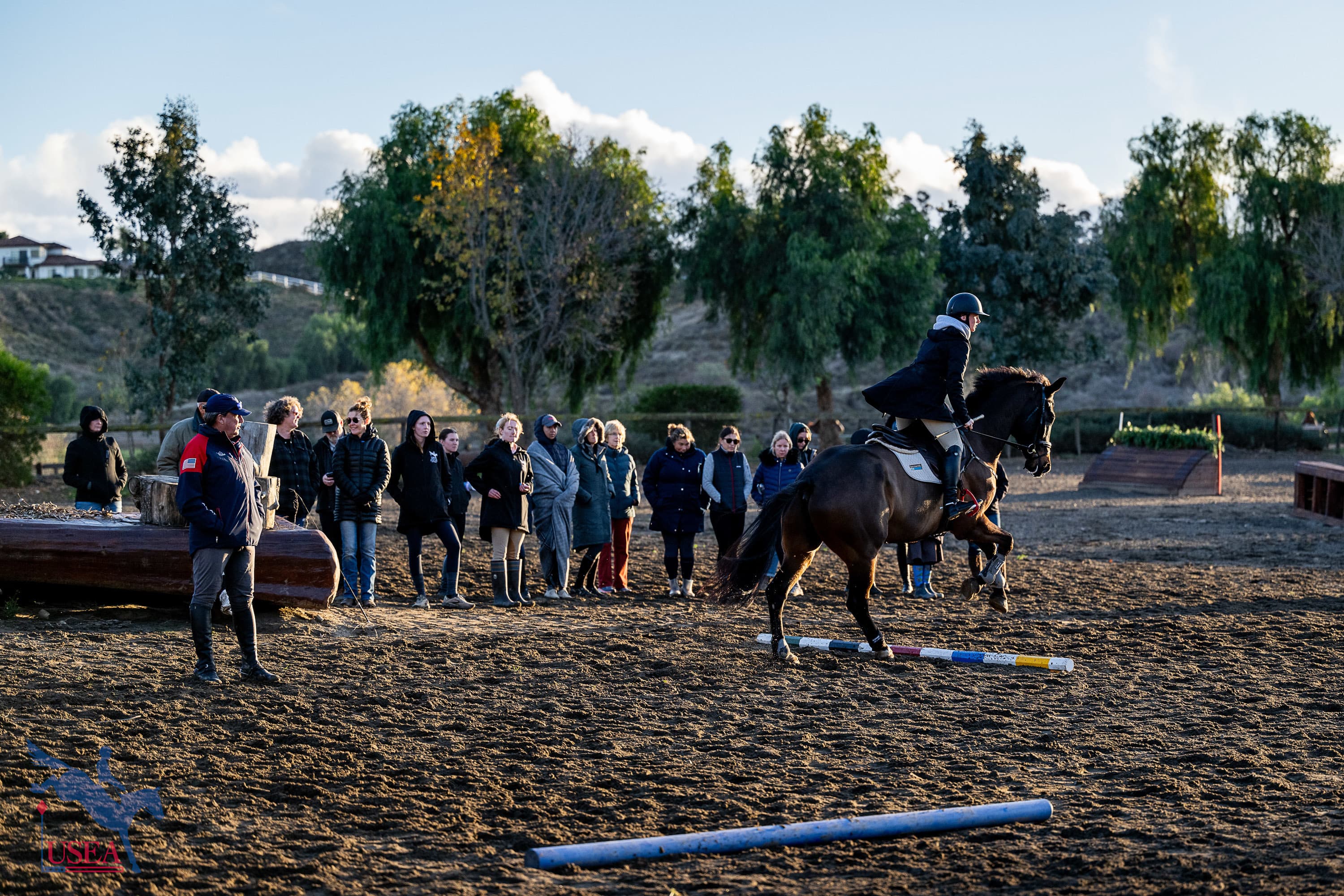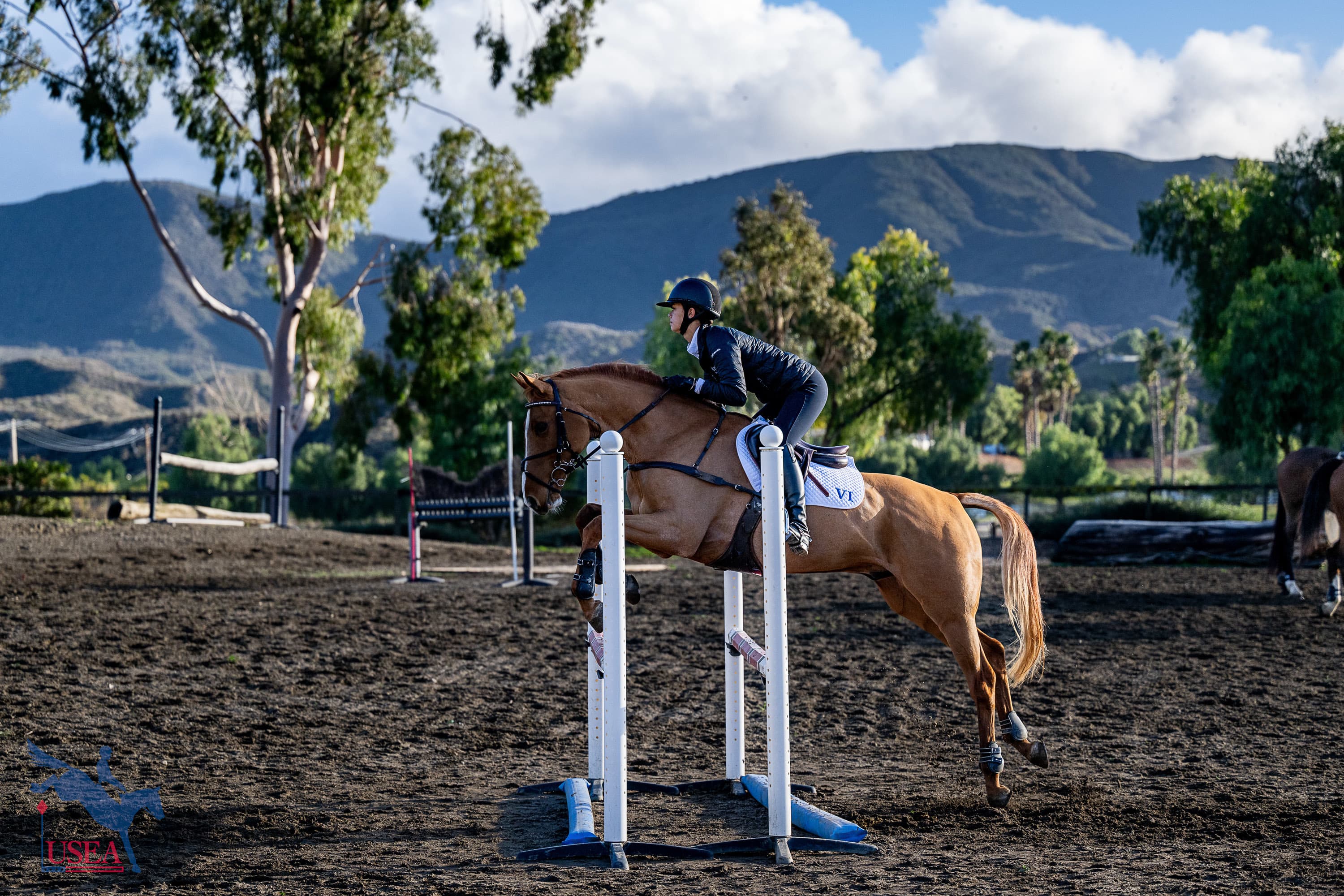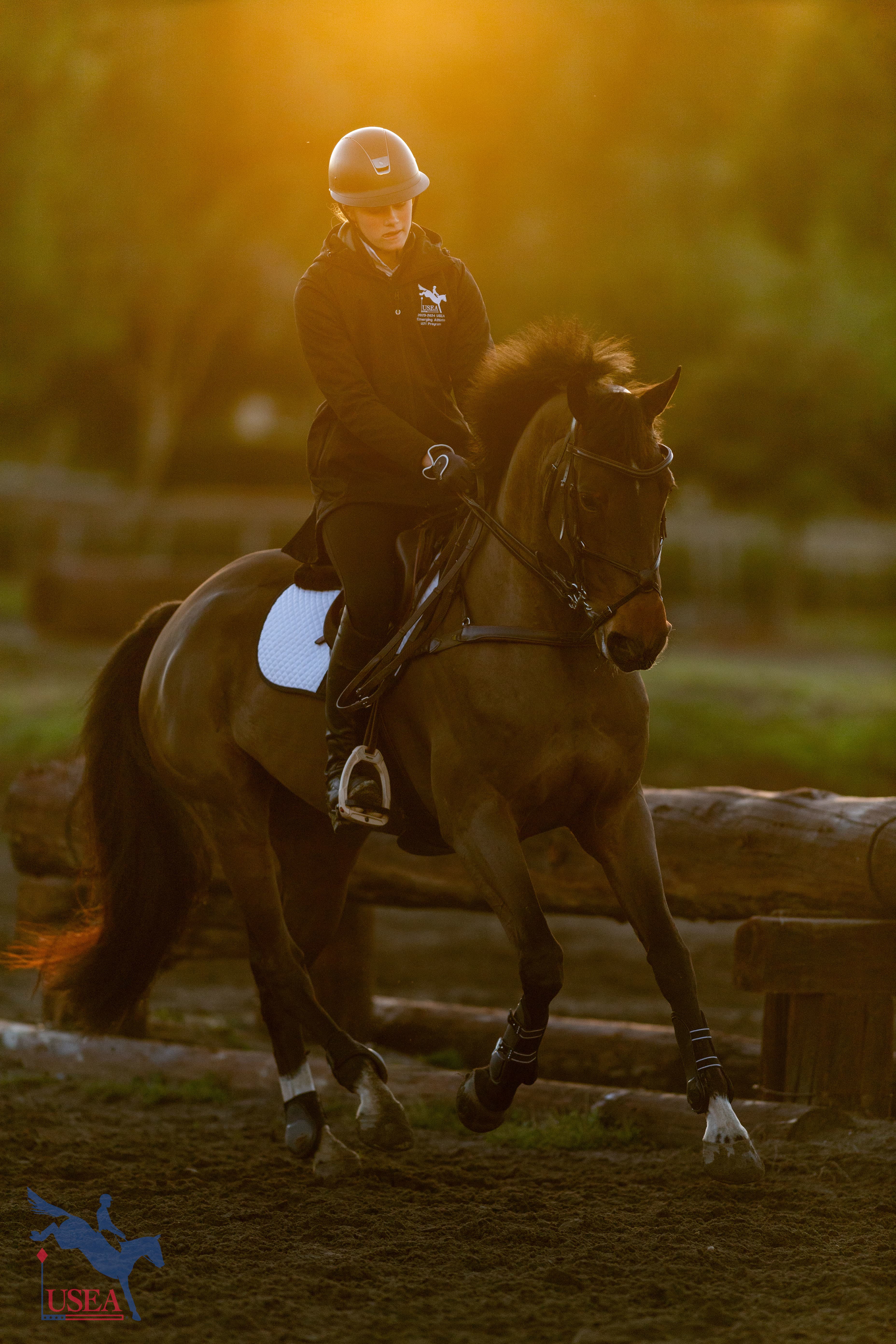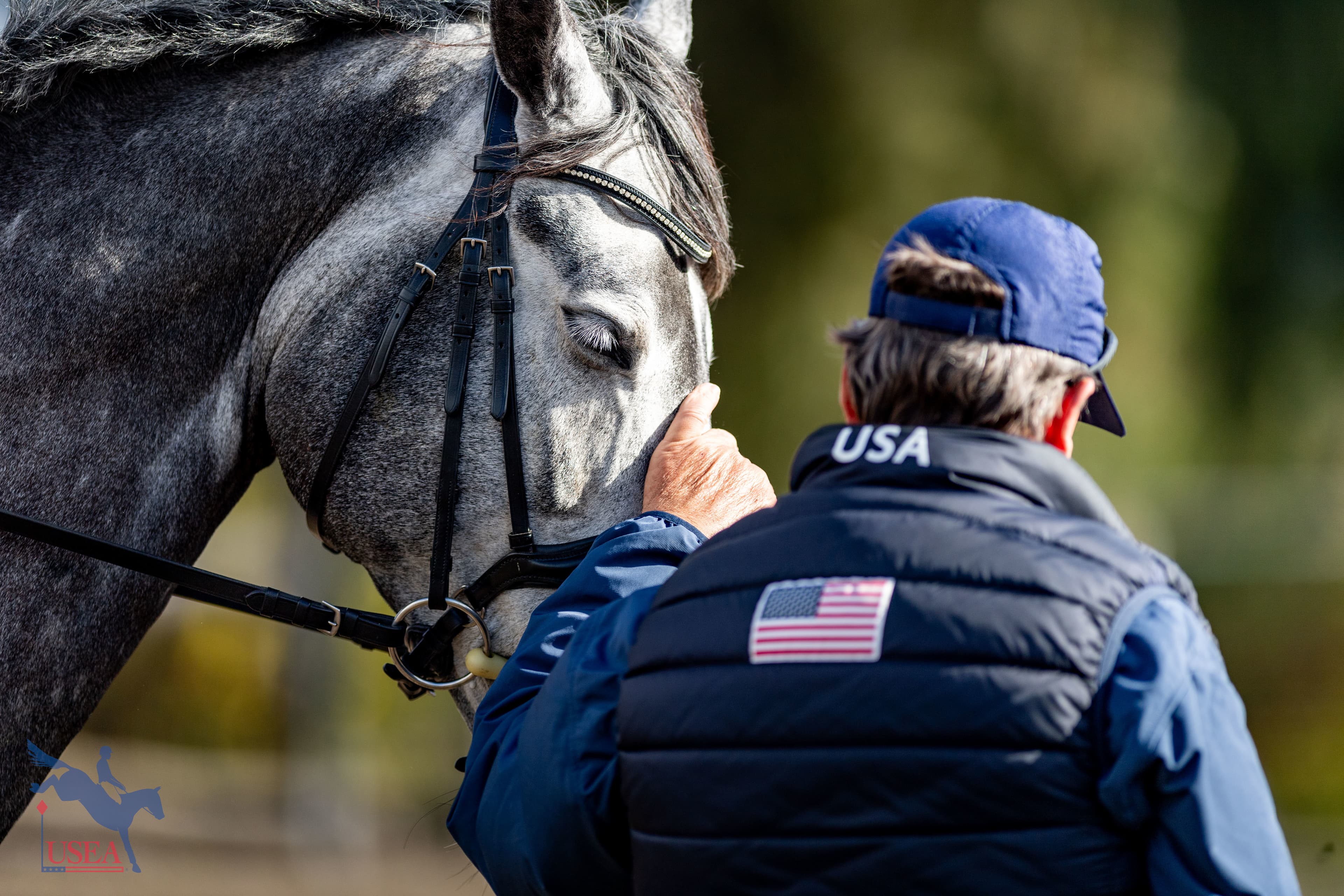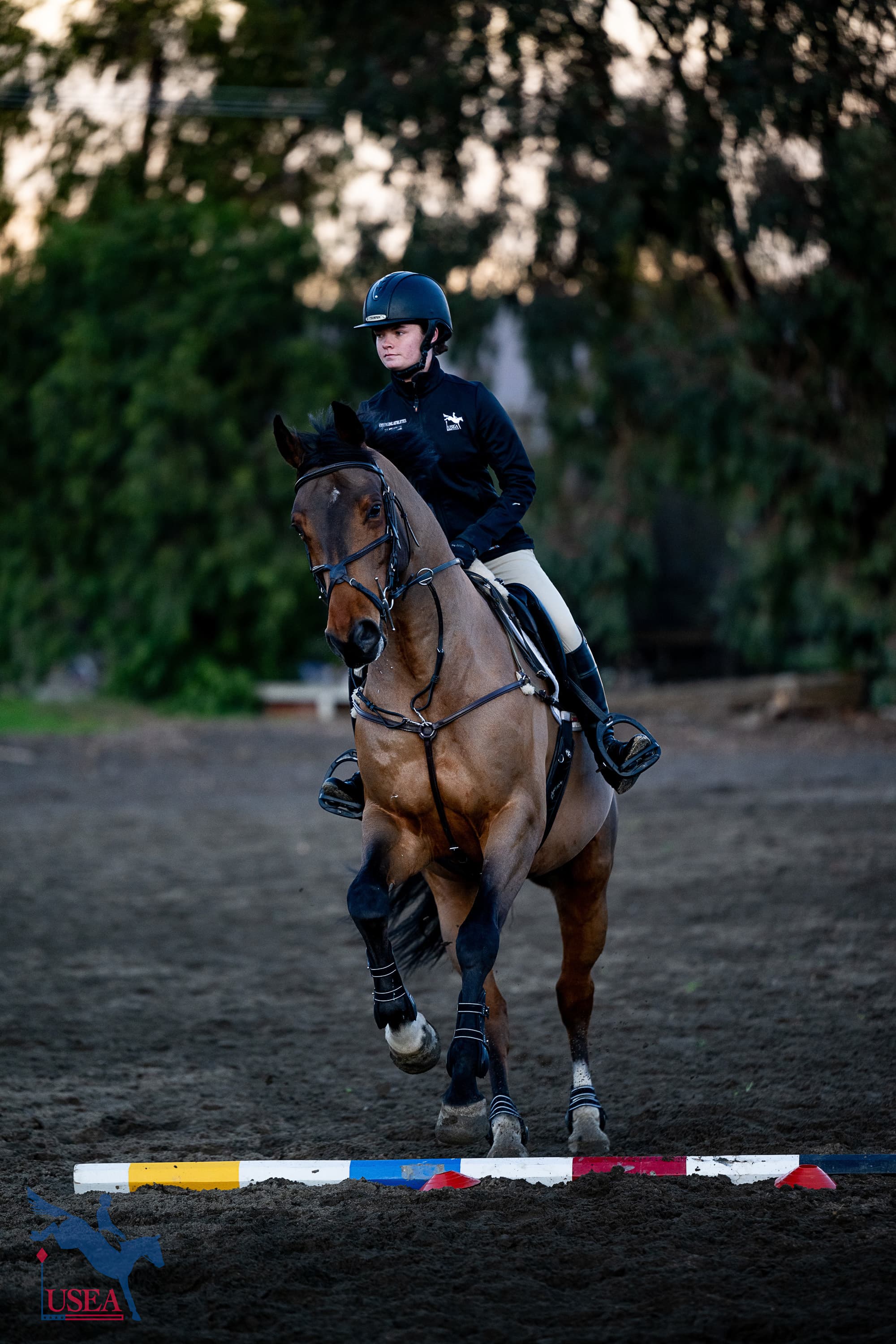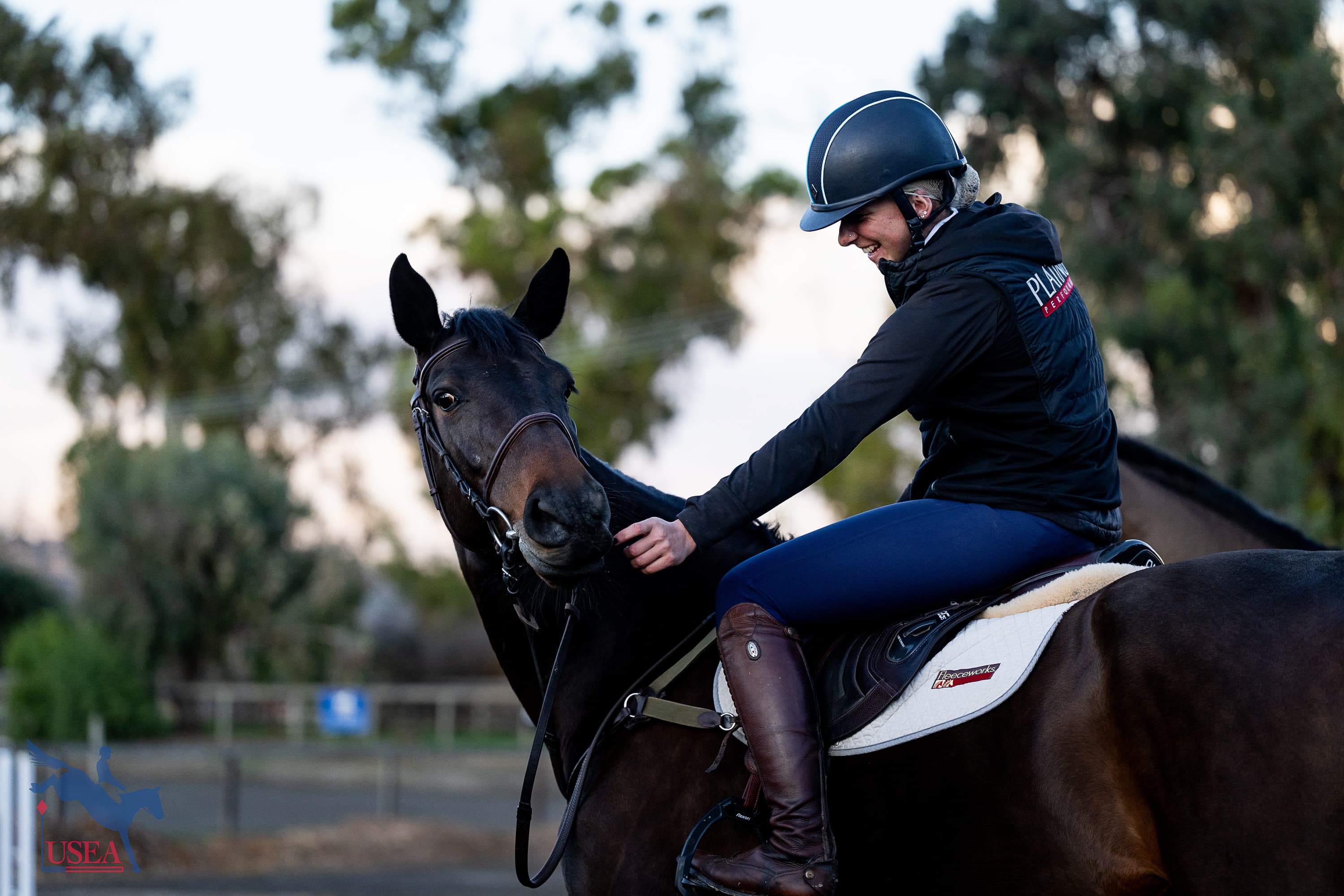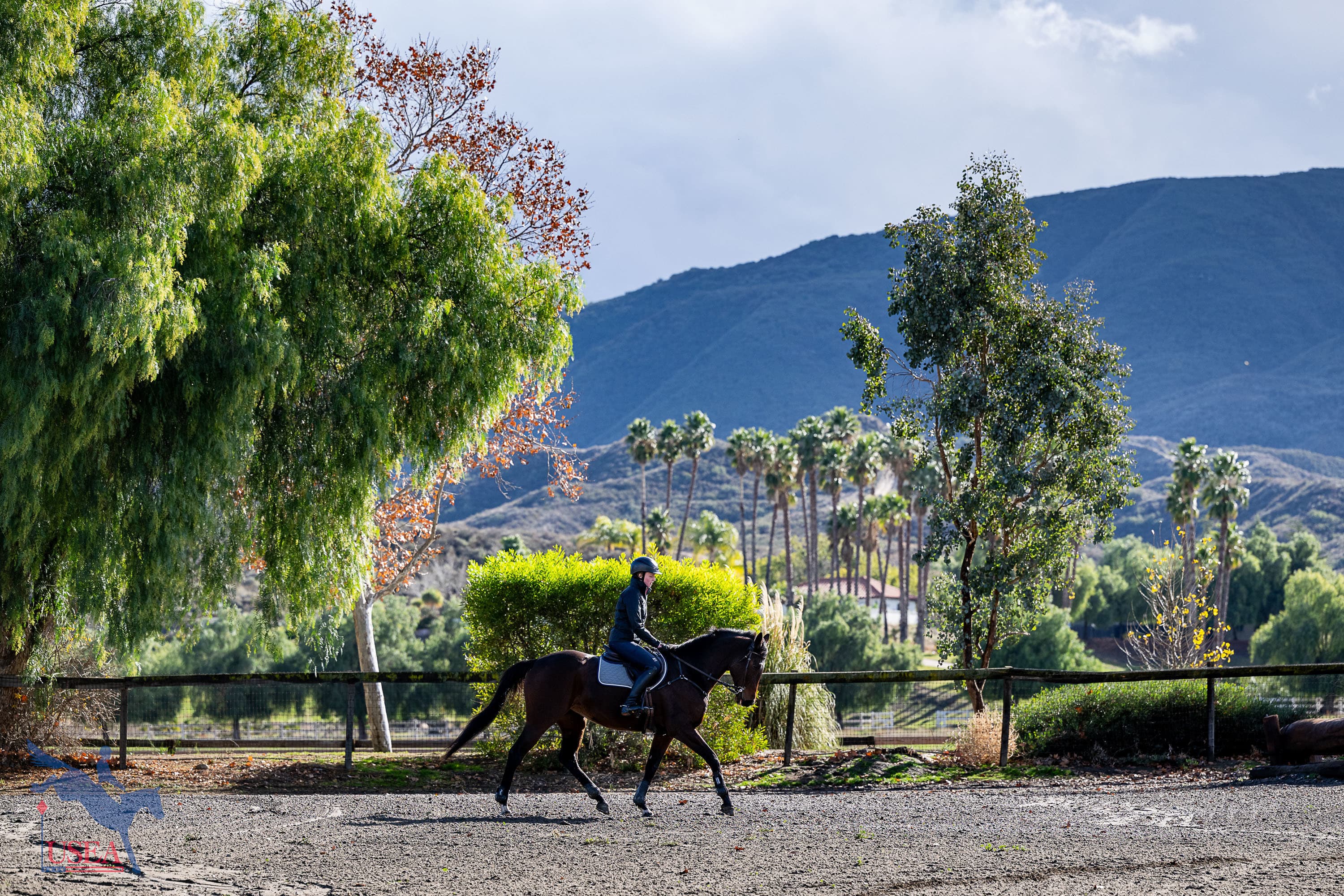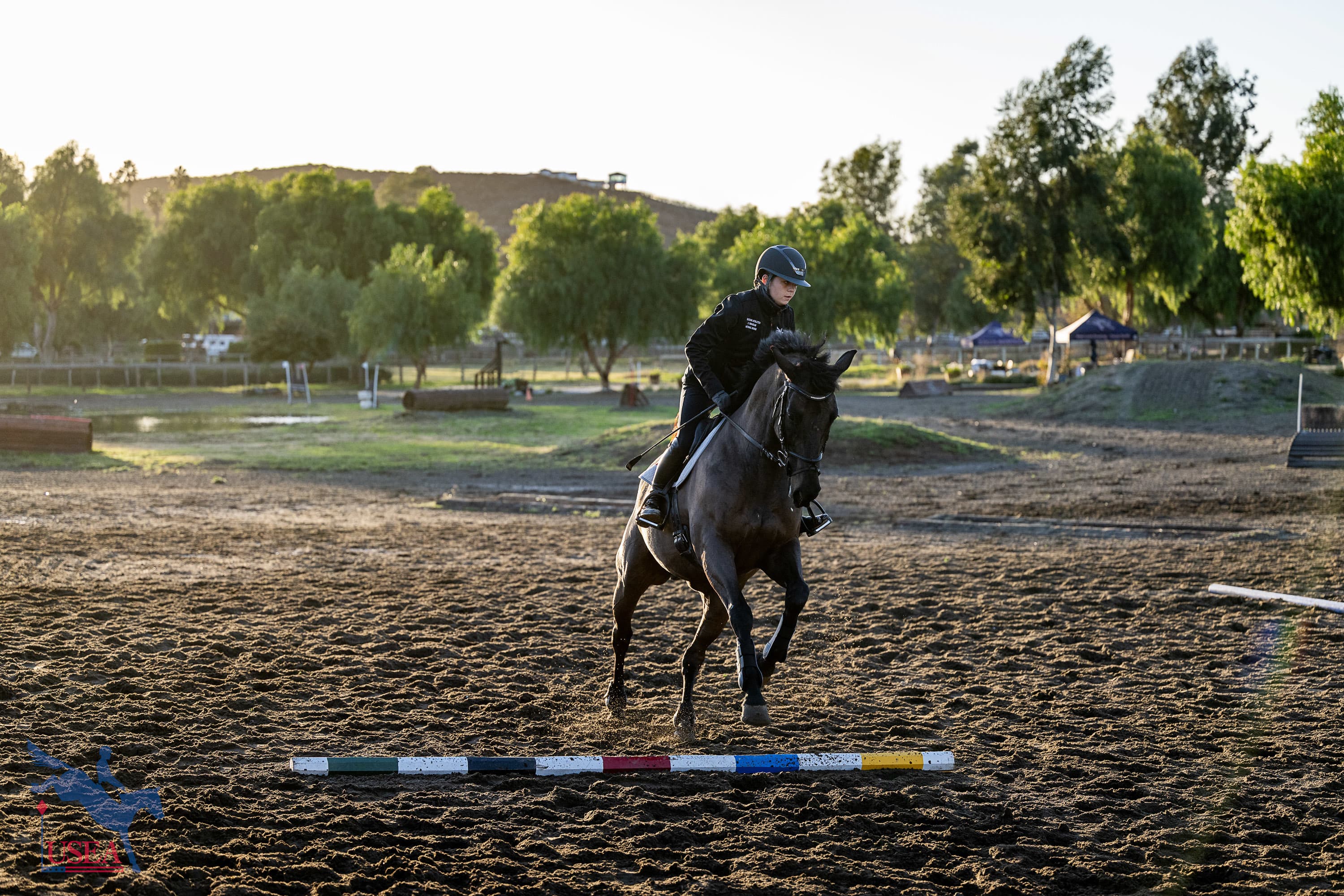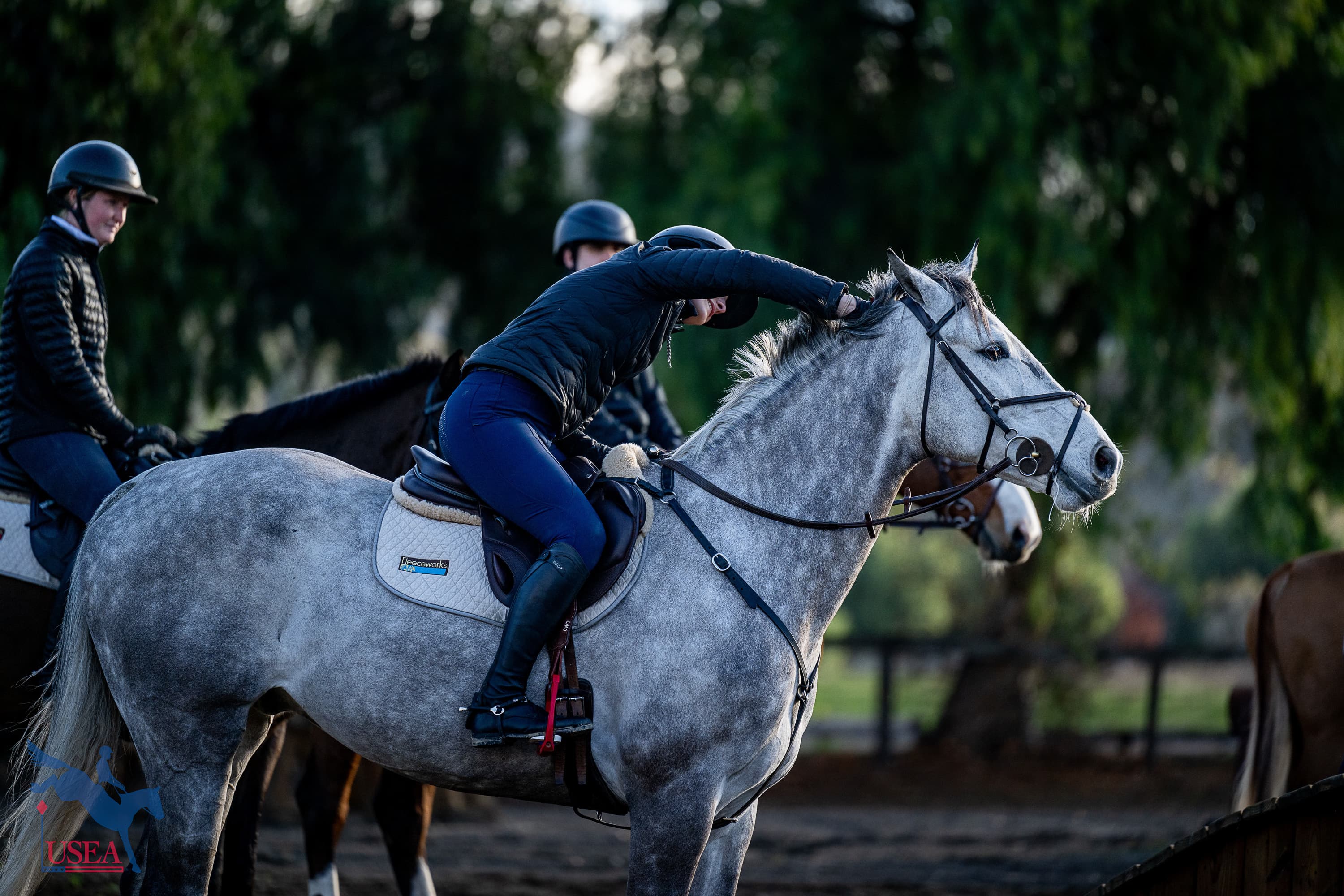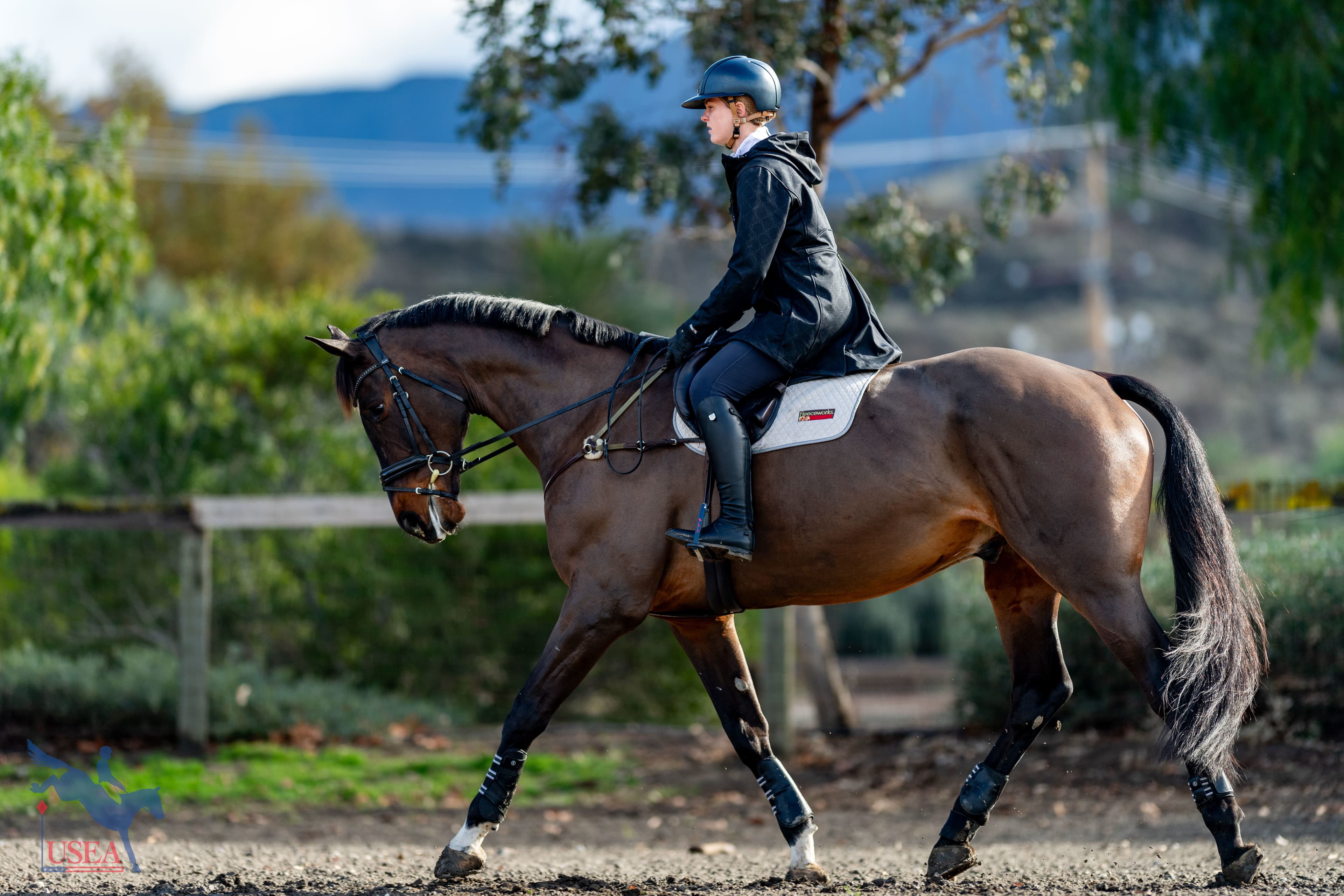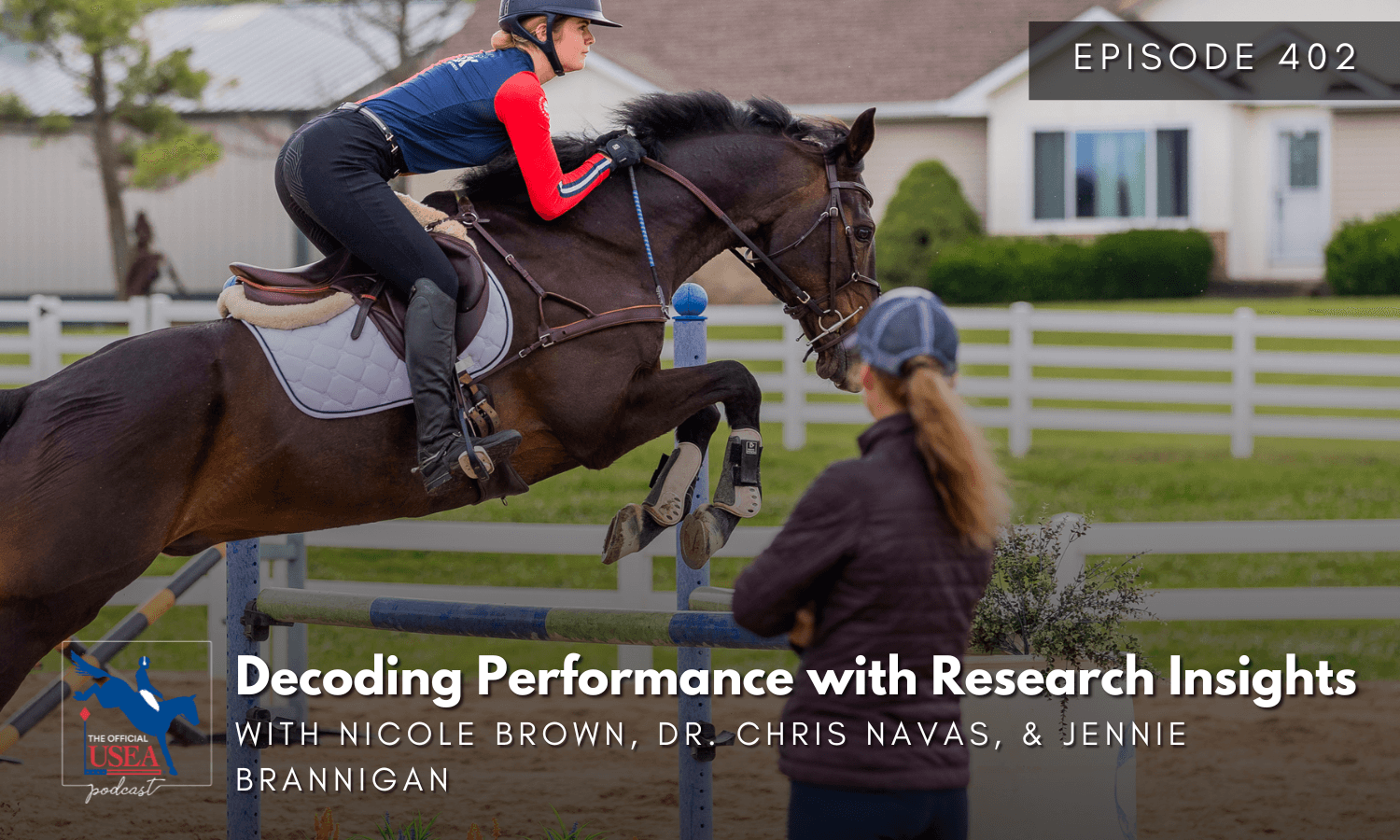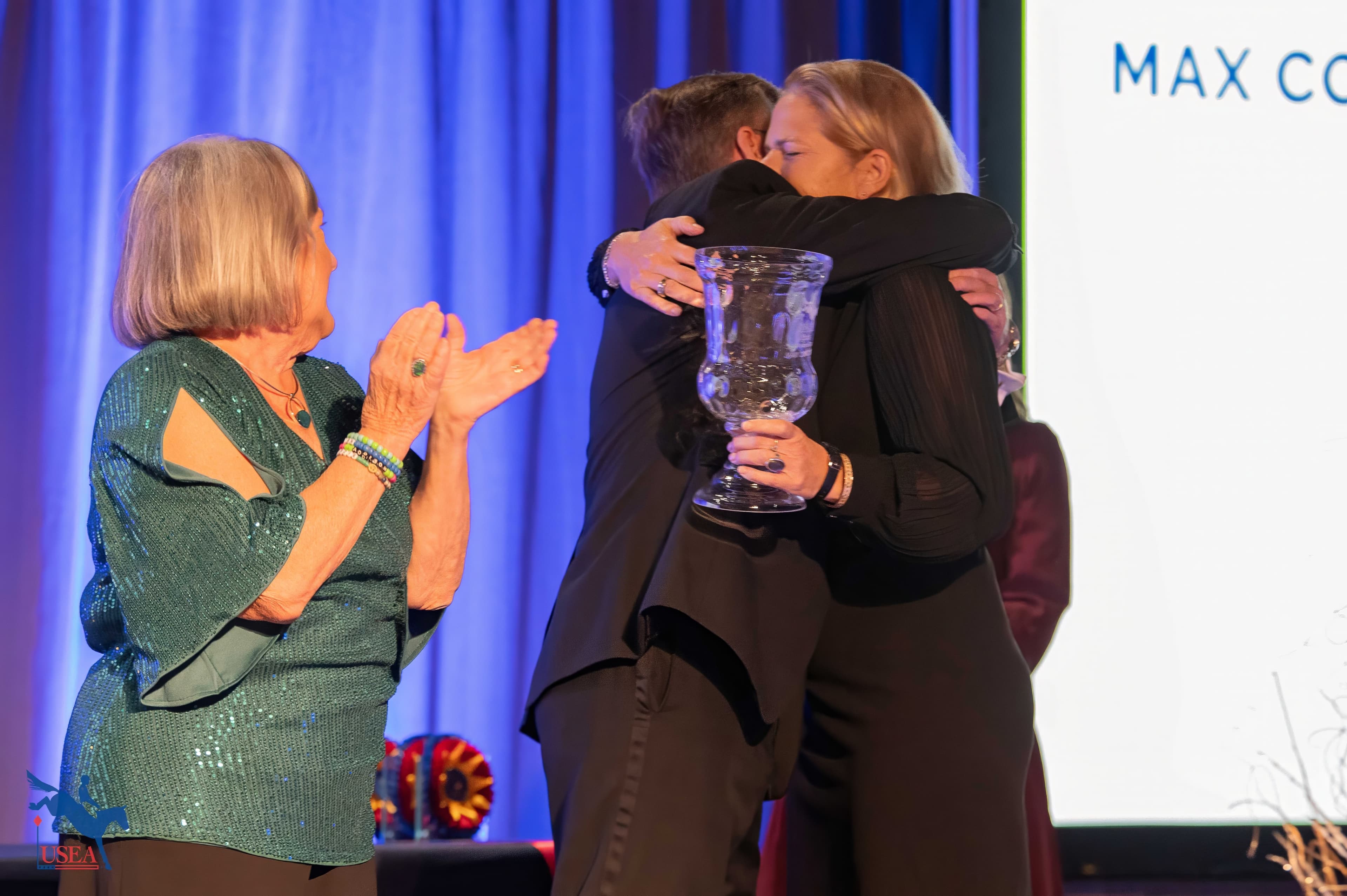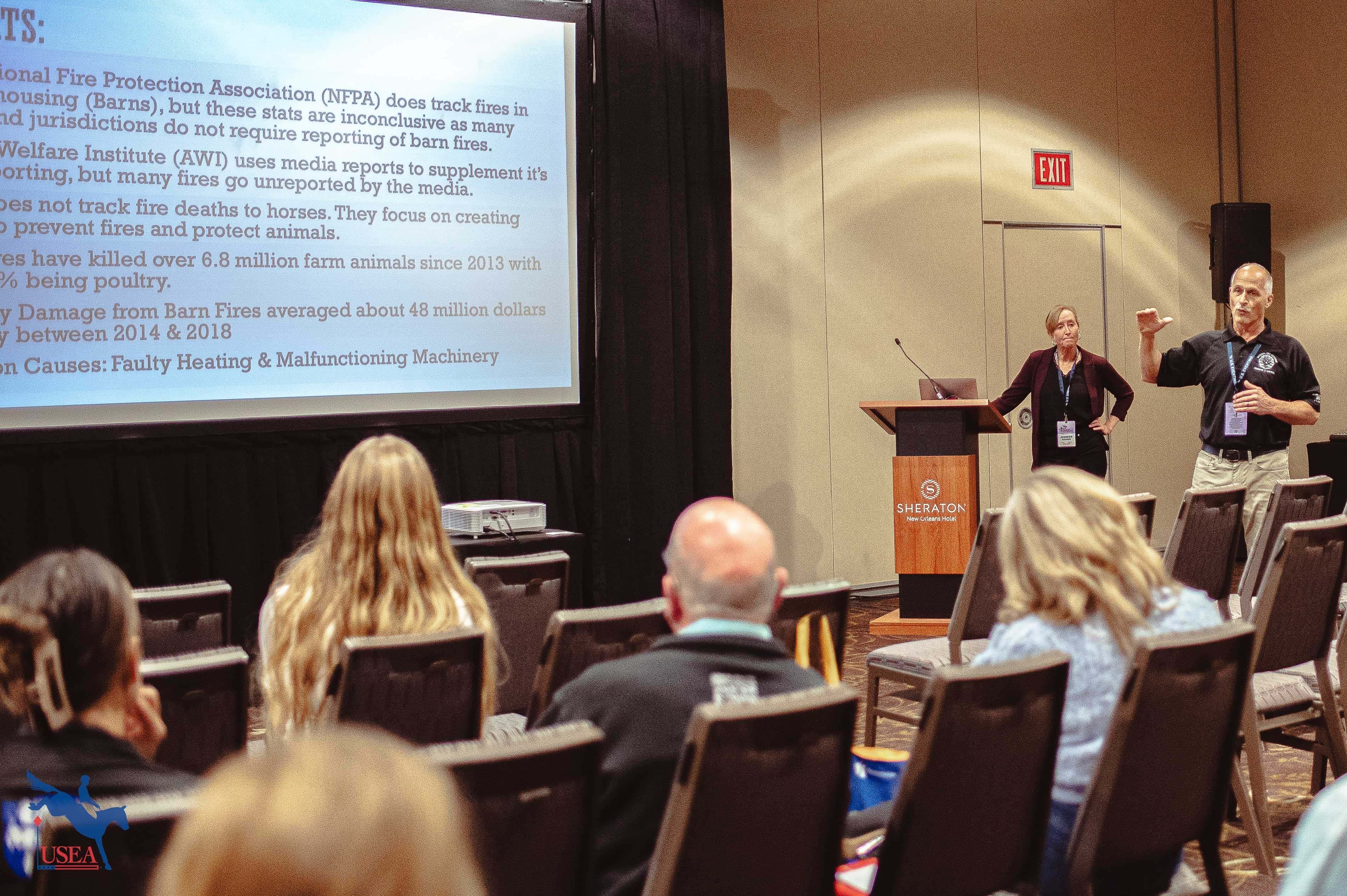Fundamentals Have Their Moment at EA21 National Camp Day 2
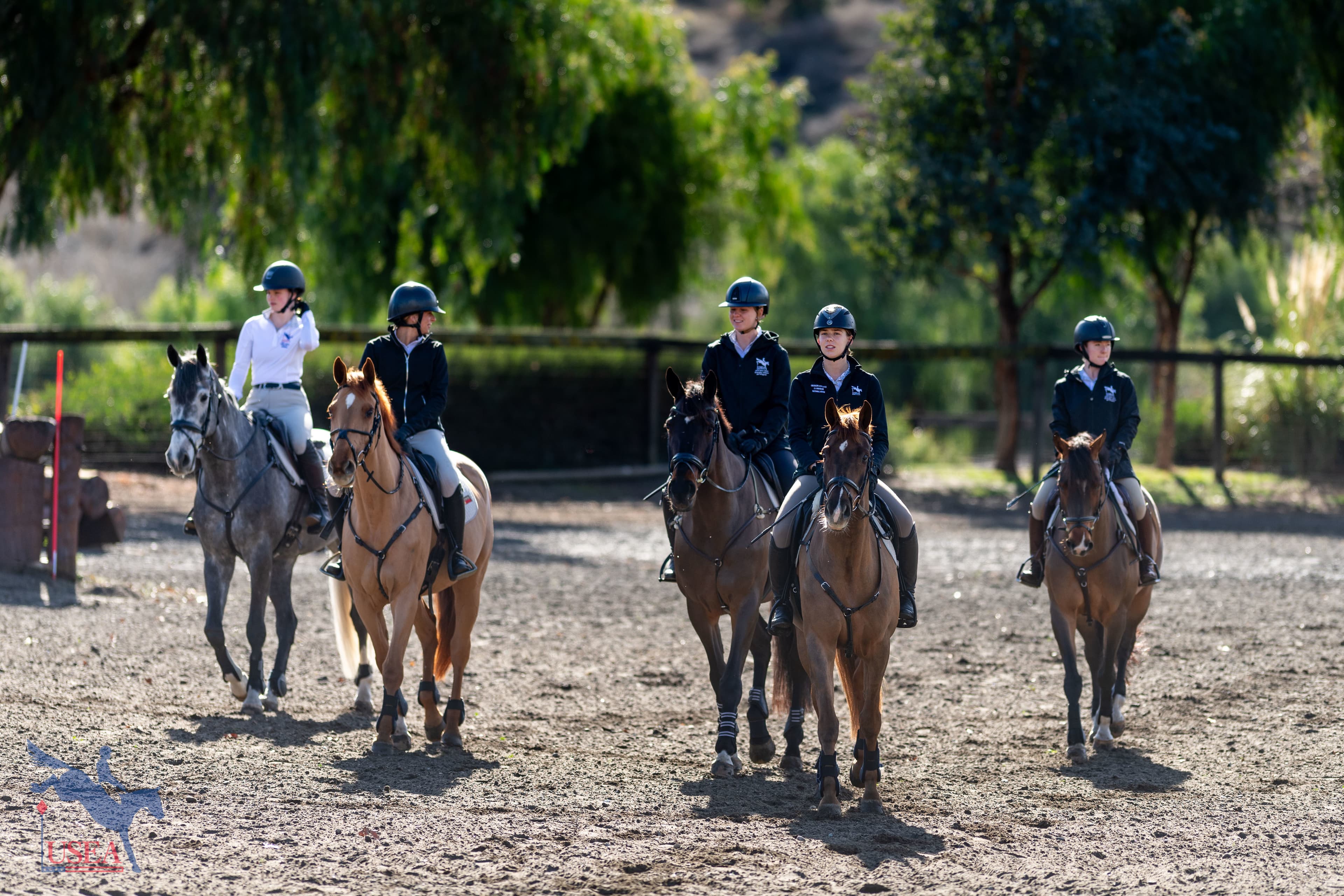
Temecula, Calif.—Jan. 3—Horsemanship and show jumping fundamentals were on the docket of day 2 of the USEA Emerging Athlete U21 National Camp at Kingsway Farm. From grooming to farrier techniques to course design questions to the concept of “next,” no stone was left unturned.
Before the classroom session began, riders had a moment to reflect on day 1.
“I'm looking forward to continuing to use the training scale the rest of the week,” Caitlin O’Roark remarked. “When we get stuck or when we start thinking about it, to just move back on the scale and make sure we have all the pieces building up together.”
Julia Beauchamp Crandon agreed wholeheartedly. “Using the tools that we learned in the classroom session with our riding session yesterday, I thought it was helpful to see what [EA21 Director of Coaching David O’Connor] had to say on my mare yesterday, and…applying it to my other horse, because they're quite different.”
Crandon and Camryn Chung had complicated rides to work through on the flat the previous day and experienced using the training scale to work through difficulties.
“One thing that stuck with me from the lecture that really showed up for my ride was David saying when you get to a hard point to stop and think, ‘what do you want?’ ” Chung explained. “My horse was quite hot; he would get low, then he would get quick. So, I just had to say, ‘OK, well, I'm not going to be thinking about the hind legs. I'm not to that point of the training scale yet. Let's just get rhythm.’ ”
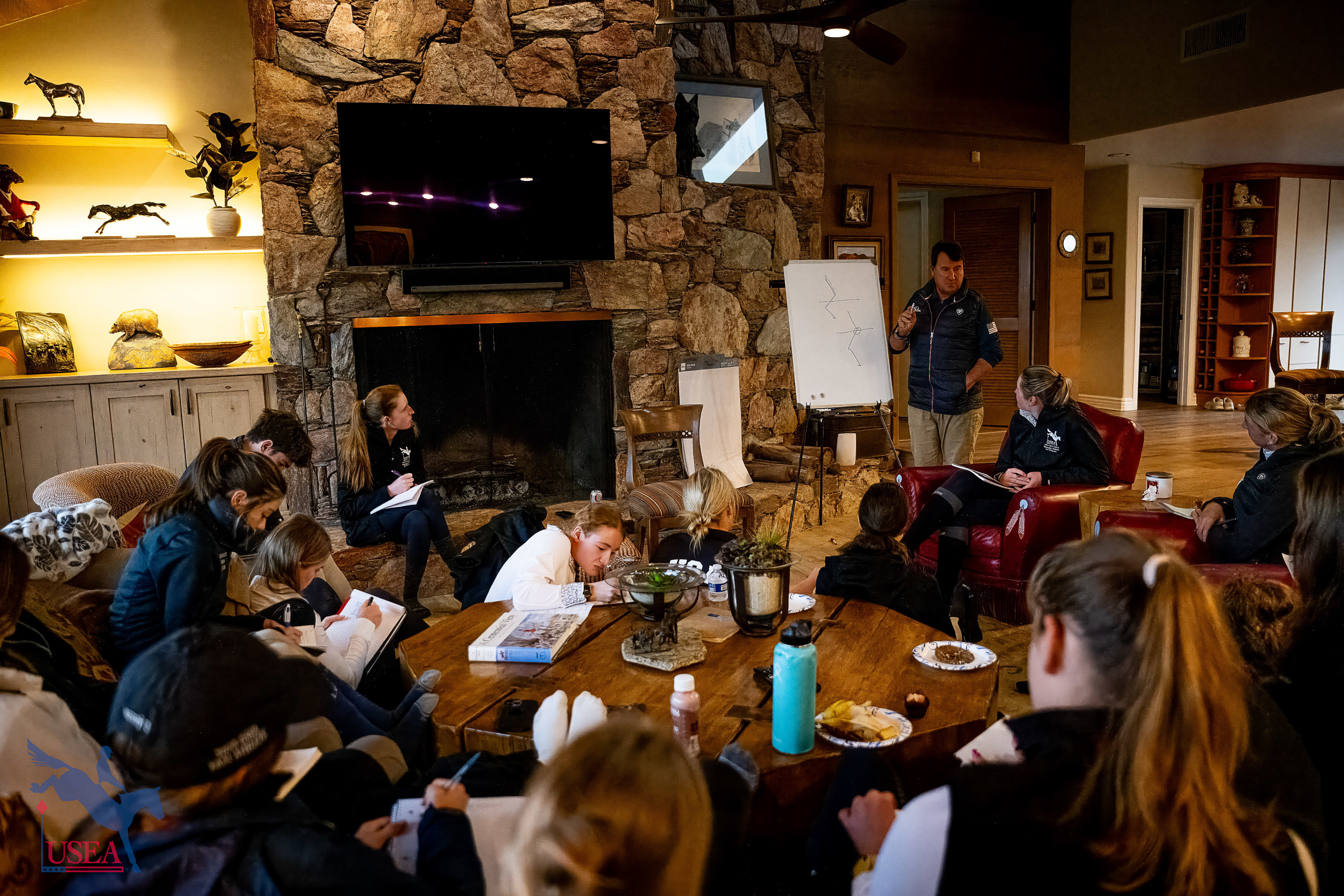
The morning session began with O’Connor impressing on the participants the history of the traditions they were becoming a part of.
“This [knowledge] is all directly from Jack Le Goff,” he said, naming the late, great U.S. eventing coach who helped the team to 18 championship medals from 1970-1984. As a graduate of Cadre Noir, the national French riding academy, Le Goff brought his expertise from his instructors and mentors.
“This has been passed for generations. Words do matter,” said O’Connor. He added that while the physicality of the horse has changed over the years, its mental processing has not. Time tested concepts still hold true.
Rider responsibility made its return to jumping fundamentals. In order of importance, the rider must provide direction, regulate speed, recognize the distance to the fence, and time their interventions appropriately. If a horse runs out but the speed of the canter was correct, and the distance was recognized, it was a failure of responsibility for direction that led to the problem.
When the rain kept rearing its head and keeping riders on the ground, the schedule quickly shifted to a horse care management session led by Alyssa Dobrotin, groom for 2022 FEI World Eventing Championship (Italy) silver medal-winning team member and 2023 Land Rover Kentucky champion Tamie Smith.
“Horse care starts at home,” Dobrotin said. “Grooming is just showing it off.”
Walking riders through a daily grooming routine, she showed them how she groomed with two hands, one holding the brush and the other following behind, feeling every inch of the horse’s body. Illustrating how excellent grooming could be accomplished without any product, she used different currying methods, brushes, and rags to get sensitive areas clean while still making grooming a positive experience for the horse.
Much like O’Connor consistently asking for the core concepts and understanding the reasons behind actions, Dobrotin also wanted participants to ask “why.” Why were they using a hard brush or a soft brush? Why were they using hoof conditioner before washing a horse? Taking the time to slow down and ask these questions of themselves would help improve their horse care.
“If I’m always 10 minutes ahead of where I need to be then things can happen, and I’m not stressed,” she responded to a question about time management. “When you practice at home, time yourself so you can have better time management at competition.”
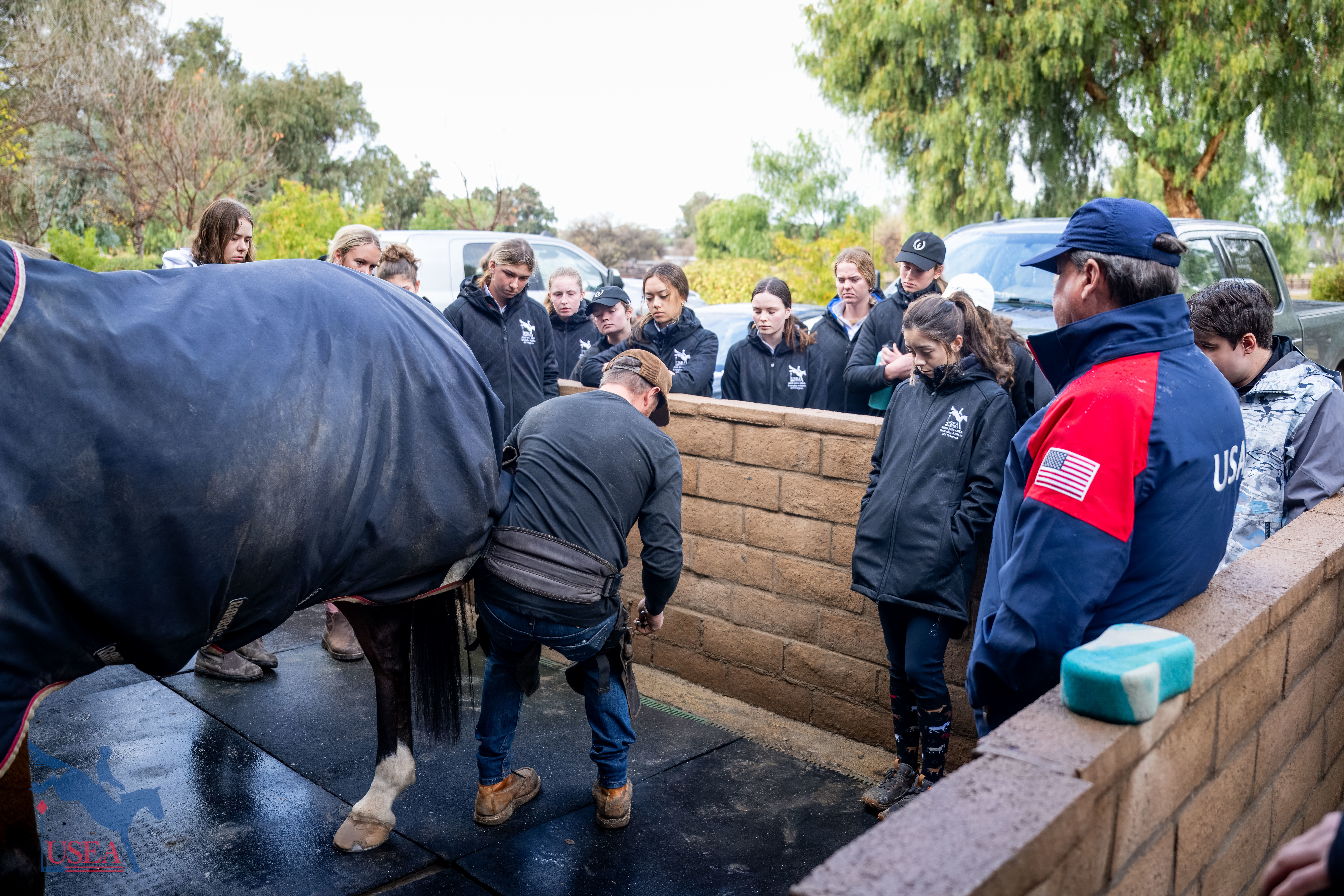
Patrick Kroenke, farrier to many of the horses at Kingsway Farm, taught participants how to remove shoes and talked them through nailing one back on. O’Connor pointed out in this demonstration that, “I want the head of the farrier, not necessarily the hand.”
Understanding how the shoeing is done and why certain pads or shoes are used means that riders can have educated conversations with their farriers rather than blindly trusting. Kroenke echoed that with strong agreement.
At last, the rain finished its downpour and participants could get kitted up in their jump gear to put into play what they had worked on the previous day and studied that morning. It was time to face the “Circle of Death.”
A set of four poles spaced equidistant on a circle, this exercise works in the same way as the drill riding on the flat. With four strides from center to center, very little room is left to make decisions and a mistake on one could domino across the rest of the circle. Riders had to steer, regulate speed, recognize the distance, and time their aids all simultaneously, continuing to reinforce the transition of technique into instinct.
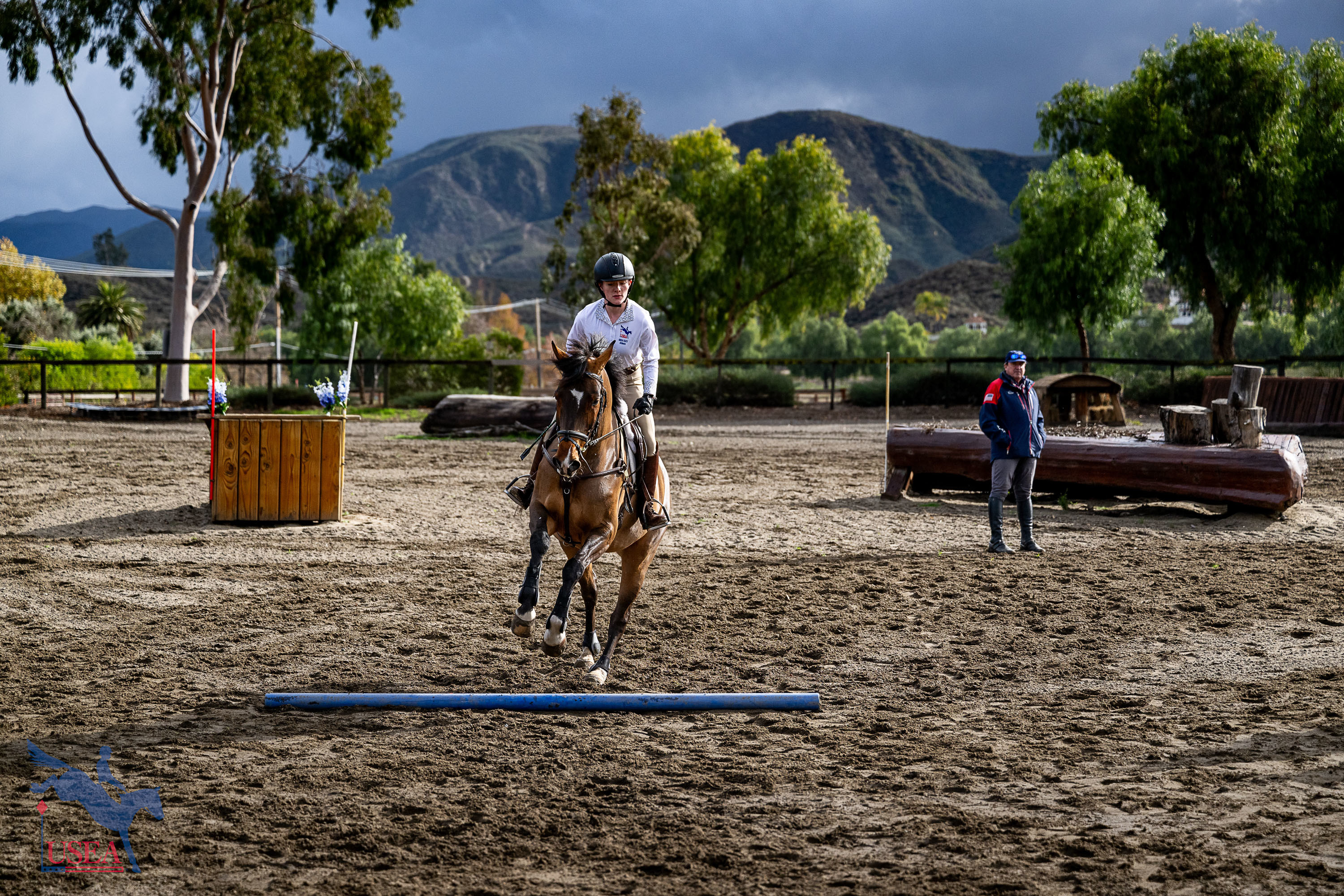
Quickly introduced was the concept of “next.” Riders would often get stuck in the moment and had to spiral out of the circle of poles to correct their mistakes. O’Connor encouraged them to plan for when they needed to take certain actions and hold to it. No matter what was happening underneath them, they must constantly be thinking about the next thing, particularly on the landing. “This is a skill set that has to be practiced,” he said. “How your mind works and how to react.”
Turning the shoulders and keeping straightness proved to be key themes of the day in the riding sessions. Going back to the training scale and the use of the aids from the day before, riders were asked to use their seat to help manage stride length and keep their shoulders and hips parallel to the horse to help with the turning. Reliance on the inside rein proved to be a few participants’ undoing, and using their bodies rather than their hands as aids helped recover and improve the exercise.
Both the German riding scale and the rider responsibility scale made their comebacks as O’Connor worked with each rider individually on a vertical and an oxer as single jump then as a related line. Rhythm and speed made their returns and so did contact and connection as some riders struggled to calm reactive horses and others worked to soften elbows and seats.
Kayla Dumler, riding her own Ferris, received the highest compliment of the day from O’Connor: a short and sweet “Perfect.”
Day 3 returns to the flat and begins with a classroom session at 8 a.m. PST and riding sessions at 10 a.m. PST. While classroom sessions are closed to National Camp members only, riding sessions are open to auditors.
Helpful Links:
Don't forget to follow the USEA event coverage on social media!
About the USEA Emerging Athlete U21 Program (EA21)
The purpose of the USEA Emerging Athletes U21 Program (EA21) is to identify and provide consistent quality instruction to the next generation of elite event riders. The aim is to create a pipeline for potential team riders by identifying and developing young talent, improving horsemanship and riding skills, and training and improving skills and consistency.
The USEA Emerging Athletes U21 Program was launched in 2022 with a model of five summertime regional clinics taught by selected USEA Eventing Coaches Program (ECP) instructors, leading to a winter national camp consisting of selected Young Riders from the regional clinics. Athletes who are 21 years or younger, are current members of their USEA Young Rider Area program, and are established at the Training Level or higher, are eligible to apply for the EA21 program. Click here to learn more about the USEA EA21 Program.
The USEA would like to thank Kerrits, Ride iQ, Sidelines Magazine and WeRideTogether for sponsoring the USEA Emerging Athletes U21 Program.
